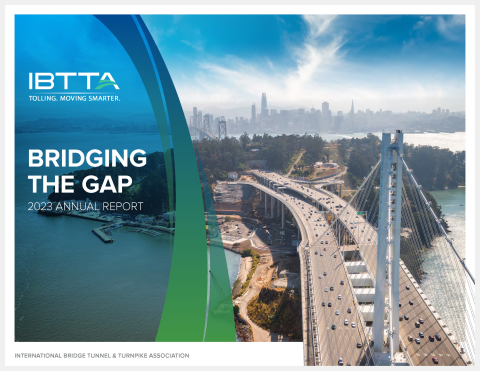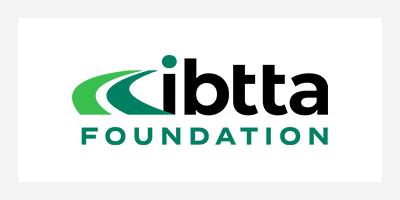- Home
- IBTTA Insights
- Migration to Open 6C Protocol. The Future is Today, not Tomorrow
Voices
Migration to Open 6C Protocol. The Future is Today, not Tomorrow


Tolling organizations are consistently looking for opportunities to improve service to their customers while also improving the financial performance of their toll facilities. With the expansion of interoperability and the expanded roll-out of multiprotocol readers (MPR) across the country, tolling operators are in a position now to consider the benefits of the passive RFID 6C tags over the limits and costs of legacy active-tag technology.
The primary decision driver among toll operators for migrating to 6C protocol is focused on reducing the cost of toll transponders while still preserving the high read and revenue performance of the transponders. Toll operators have reported that windshield sticker tag costs reduced their per-unit transponder cost from over $9 to under $1 per unit. This type of savings has a positive ripple effect for tolling organizations. First, it affords the opportunity to offer tags at no cost to the account holder, helping drive new customer account creation and tag penetration. It also encourages account holders to put a tag in every vehicle and avoid the hassles associated with sharing expensive active tags between multiple vehicles. Greater tag penetration means improved revenue collection with less leakage, improved billing accuracy, and reduced operating costs per transaction. Lower upfront customer costs can also lead to greater overall consumer support for the use of toll facilities in their communities.
With a number of agencies supplementing the initial customer expense of active-transponders, agencies migrating to 6C can instead reinvest those savings to improve toll facilities, toll roads, and investment in community-based or road-equity projects. This would provide safer roads and facilities for drivers and access to special consumer programs.
With multiple exterior installation options, such as bumper mount and headlight/motorcycle tags, toll operators can enable tag adoption across a wider range of vehicles, offering more customers the ability to establish lower cost accounts and improving revenue for the toll organization.
For tags installed inside the vehicle, smaller form factors for 6C tags means less windshield obstruction and safer driving visibility compared to tags with larger form factors. But the benefits of smaller form factors do not stop there.
Due to the obvious size advantage of the much smaller 6C windshield sticker tags, agencies now have the flexibility of using smaller storage space for securely maintaining their tag inventory. Also, 6C tags are much cheaper to ship to customers than the bulkier, heavier battery-based active tags. This provides substantial annual savings to toll agencies. Tag fulfillment contractors can also save on the size of the packaging required to mail smaller, lighter 6C tags. Besides saving on postage, distribution of 6C tags have more options to use eco-friendly shipping material providing a benefit to agencies and their customers.
The average life expectancy of a legacy battery-powered transponder is up to 8.6 years while 6C life expectancy of passive tags is well over 10 years. When tags finally reach the end of their life, 6C tags eliminate the fear and reality of dead batteries ending up in landfills, thereby supporting their sustainability goals for themselves and their communities.
There are also technical drivers for migrating to 6C. Today’s modern tag design provides higher sensitivity than legacy passive tags and leads to improved range and/or lower operating radio frequency (RF) power. Higher speed communications between the reader and tags allows transfer of more data, larger number of tag access operations, or reduced transaction time. The migration to 6C technology nationwide allows toll operators to modernize their system, acquire less expensive and longer lasting 6C tags, and achieve interoperability. By doing so, consumers are more motivated to use their tags across neighboring states or regions of the country.
Aging legacy roadside systems reaching end-of-life in the field makes for an ideal time for toll operators to update their systems to include multiprotocol readers (MPR). This flexibility in roadside equipment enables an easy transition over time toward 6C tags to replace aging hardcase transponders. Today’s interface controls (ICD) streamline the integration with legacy lane controllers to make the conversion to MPRs more straightforward. It is very possible that toll operators could realize a return on their investment within the first year of implementation.
As a longtime member of the 6C Coalition, Neology has provided 6C tags and 6C readers since 2006. According to Bobby Leanio, our Director of Manufacturing: “Neology continues to see the industry’s interest in 6C grow. We have delivered over 130 million 6C transponders worldwide including windshield sticker, headlamp, hardcase, 2-position, 3-position and license plate transponders with no signs of slowing down.”
Dave Missimer, Neology’s Director, RFID Lab, adds: “The interest in multiprotocol readers with the capability to read and write to 6C and other national interoperability protocols continues to grow. As we develop new AVI products at our RFID R&D lab in North Carolina and prove out product performance at our OmniAir certified test facility at our Texas A&M Transportation Research Center, it is clear that the industry has the solutions available to support a successful 6C migration today”.
Neology continues to participate in industry working groups and initiatives, including participation in OmniAir’s Tolling and Emerging Payments Working Group and the Certification Working Group, in the E-ZPass Group-sponsored multi-vendor discussions on multi-protocol certification for tolling, and in direct participation with the E-ZPass Group Technical Committee. In addition, Neology has provided technical representation to the 6C Toll Operators Coalition (6C TOC), a collection of toll agencies in North America which have deployed the 6C technology.
It is important that all agencies and the tolling industry as a whole consider the migration to 6C as an option to reduce costs and advance electronic tolling interoperability. The future for 6C migration is today, not tomorrow.

Joining IBTTA connects you to a global community of transportation professionals, offering unmatched opportunities for networking, knowledge-sharing, and collaborative innovation in the tolling and transportation sector.
Follow IBTTA on social media for real-time updates on transportation trends and collaborative opportunities.





